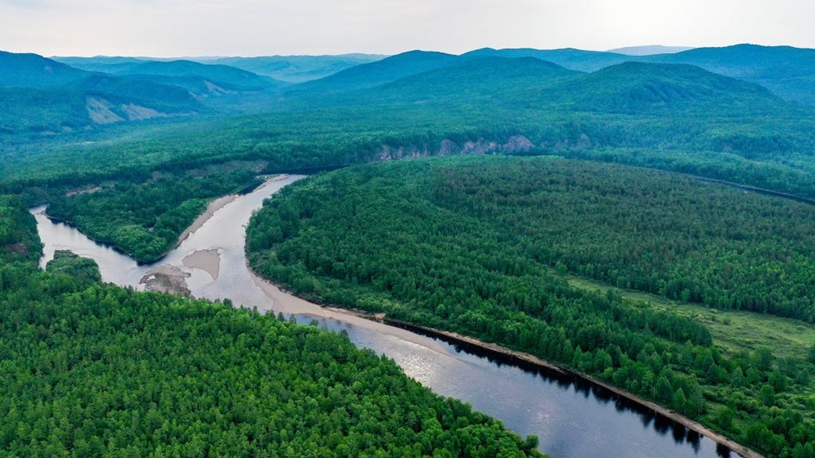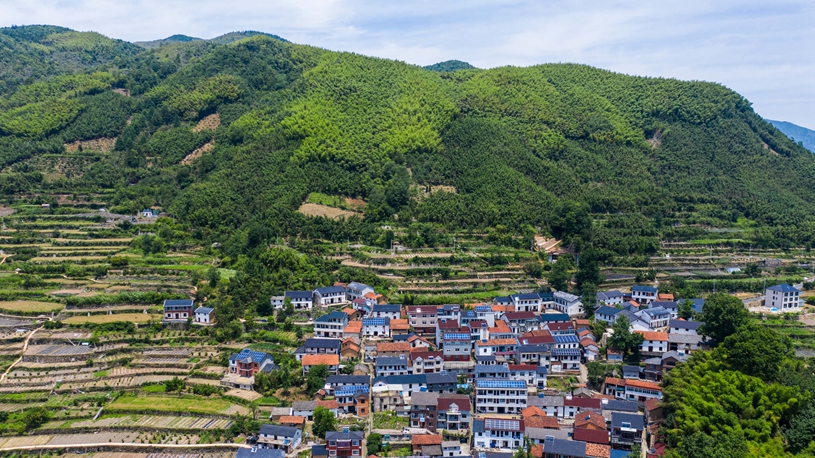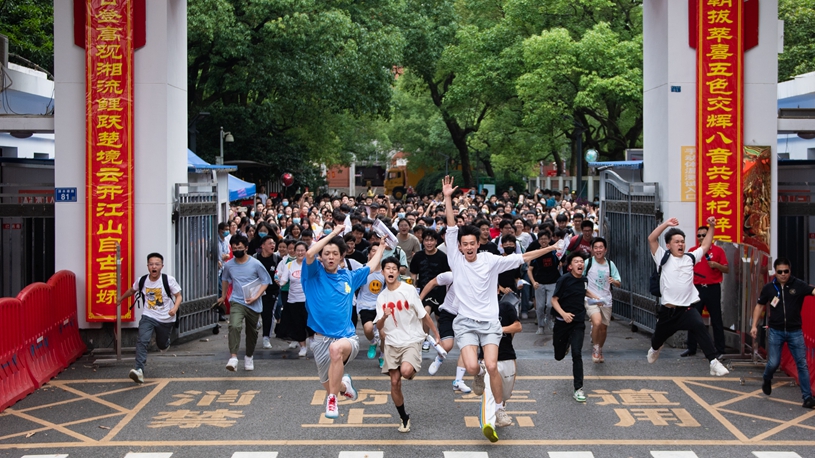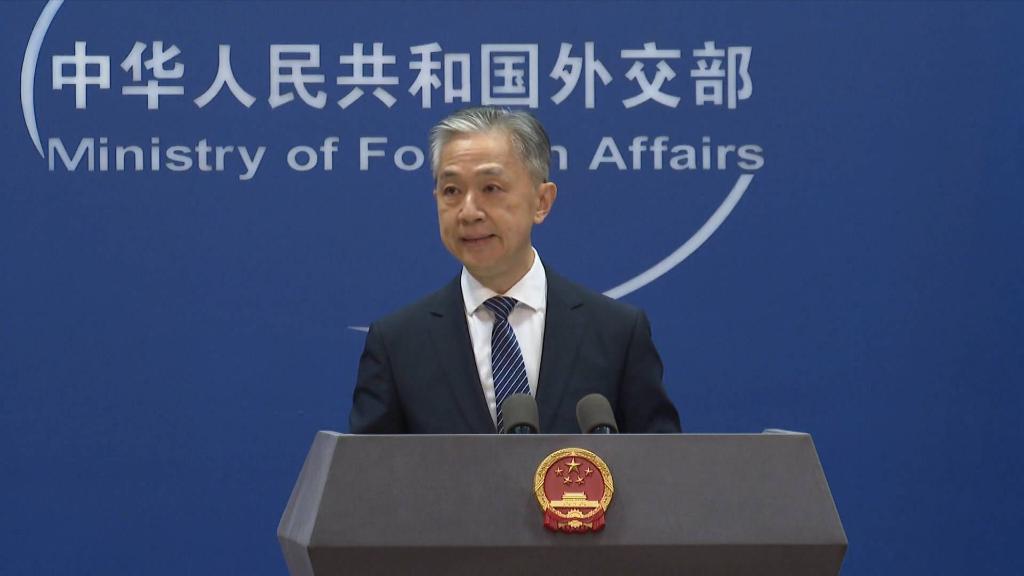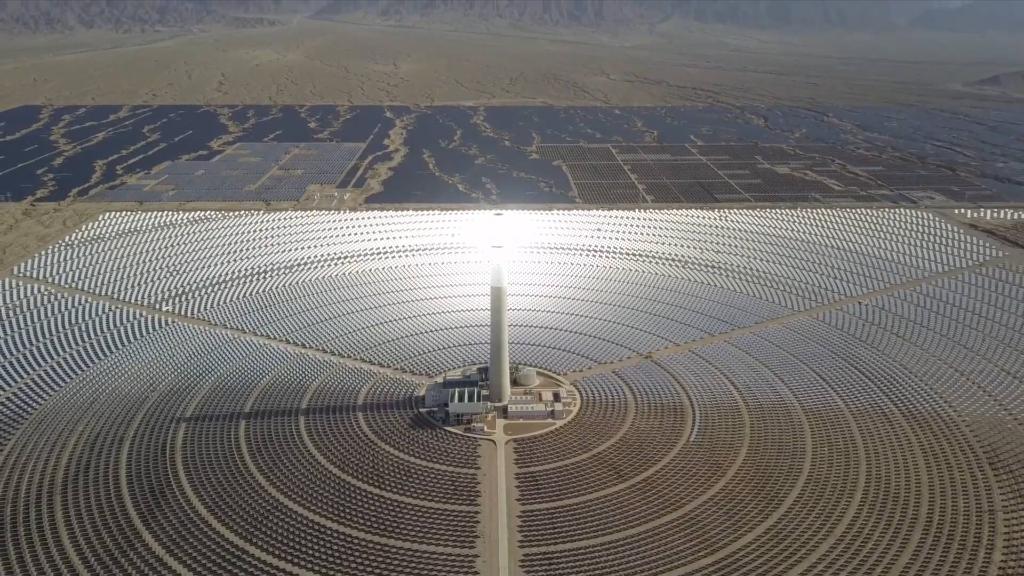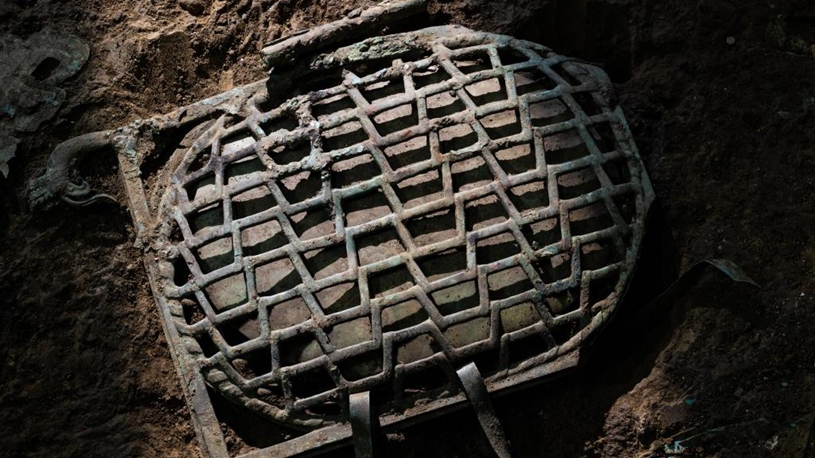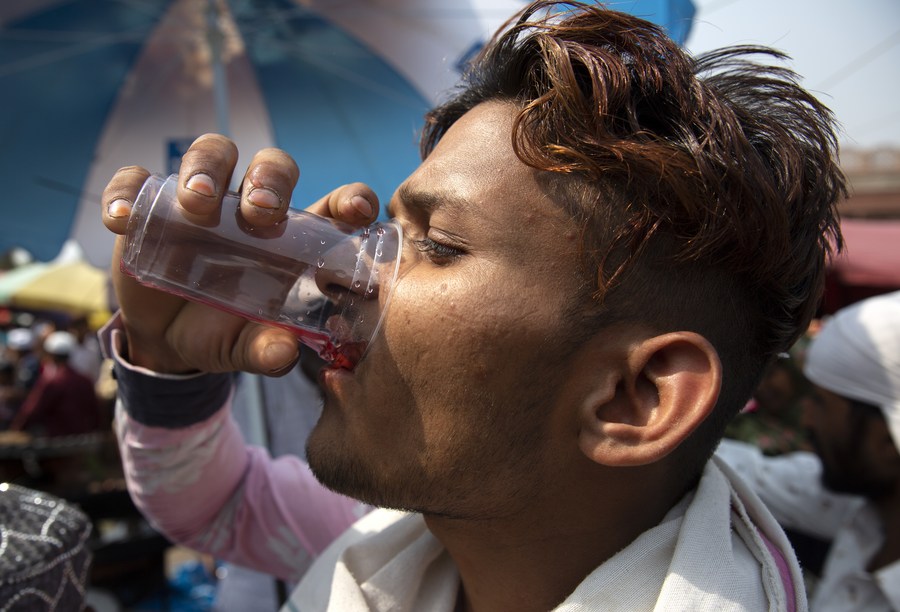
A man drinks water on a hot day in New Delhi, April 29, 2022. (Xinhua/Javed Dar)
People in various places across India have been struggling hard and risking their lives to get water to drink. Many parts of the country are facing an acute shortage of drinking water as rivers are drying up due to heat waves and groundwater is depleted.
by Peerzada Arshad Hamid
NEW DELHI, June 15 (Xinhua) -- This summer rising temperatures in India have worsened the water crisis that it has been facing for some time now.
ACUTE SHORTAGE OF WATER
People in various places across India have been struggling hard and risking their lives to get water to drink.
Earlier this month a video of two women scaling the wall of a well without a rope or harness to access water in the central Indian state of Madhya Pradesh made headlines, highlighting the acute shortage of water in Ghusiya village. The villagers, according to reports, have been forced to take such extreme measures after wells and ponds have dried in the area.
Another video from the western state of Maharashtra's Amravati district shows women in Khadimal village risking their lives every day for one bucket of water.
The village in the drought-prone Vidarbha region often faces frequent heat waves. Residents said the local village council sends tankers twice or thrice a day. The water from the tankers is poured into a well, thus triggering a desperate rush from residents to fill buckets before the water in the well runs dry.
People crowding around the well and jostling to fetch water from depth using ropes tied to their buckets have become the defining image of the country's water crisis.
In Pimpalpada village of the state's Nashik's district, locals told the media the well in the village has dried up, and villagers are forced to fetch muddy water from the forest to meet their daily water requirements.
In the desert state of Rajasthan, authorities started a train service to ferry water to Pali district, which is presently facing the worst water crisis. Reports said all sustainable water resources have almost dried up in the last decade in the district. The water scarcity began in March this year in the wake of extreme hot weather.
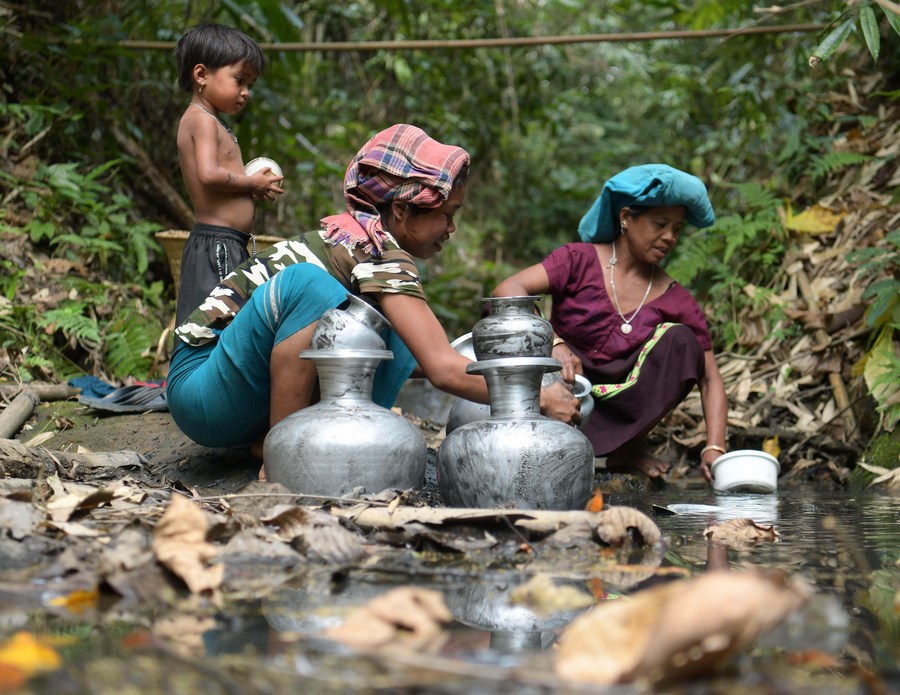
Tribal people collect water from a small stream in Tirthamoni village, India's northeastern state of Tripura, April 1, 2022. (Str/Xinhua)
Locals said every day, dozens of people (mostly women and children) struggle hard to fill their plastic jerry cans and metal pots from hoses gushing water out of the water train. Many residents who fail to receive the water provided by authorities are forced to fend for themselves.
Many parts of India are facing an acute shortage of drinking water as rivers are drying up due to heat waves and groundwater is depleted.
Delhi Jal Board (DJB) Vice-Chairman Saurabh Bharadwaj recently expressed deep concern over river Yamuna's dipping water levels and urged the Haryana government to release Delhi's share of water in the river to manage the water crisis in the national capital.
He claimed that Haryana has stopped releasing water from the river Yamuna which has reduced the water supply in Delhi by nearly 100 million gallons per day (MGD).
Out of an average of around 953 MGD of water that is produced in the city, around 40 percent or 389 MGD comes from the Yamuna.
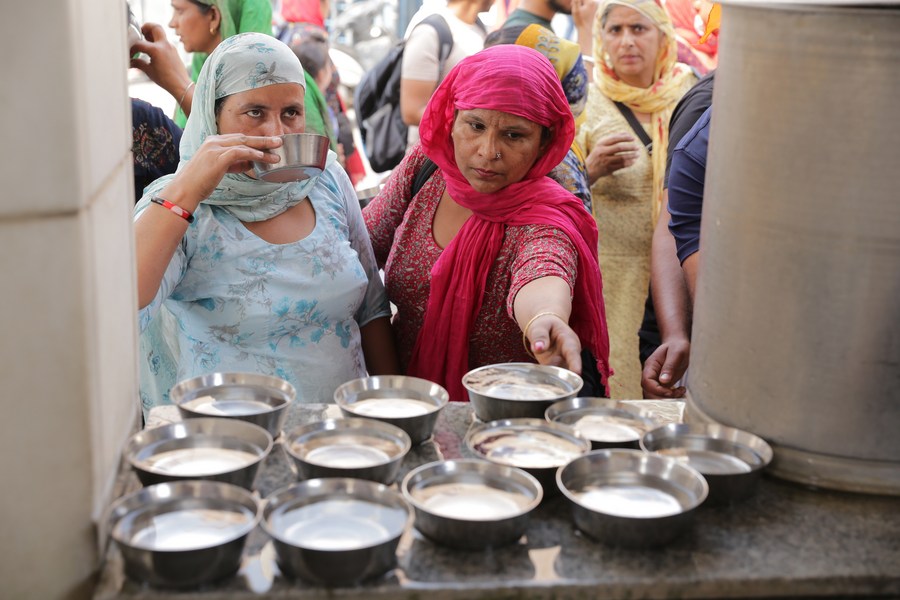
People drink water during a heat wave in Amritsar, Punjab state, northern India, on April 29, 2022. (Str/Xinhua)
WATER STRESSED COUNTRY
Indian government's top policy think tank National Institution for Transforming India (NITI) Aayog (commission) has predicted that India will have only half of the water currently available for human consumption by 2030 if corrective measures are not undertaken. As per the report several major cities have already run out of groundwater and many places in the country are in a critical state.
A 2019 global report named India among 17 countries where "water stress" was "extremely high."
India has 4 percent of the world's water resources, but more than a decade ago it moved to be water-stressed.
In 2019 a report by the NITI Aayog said that India is suffering from the worst water crisis in its history, and almost 600 million of its population was water-deprived.
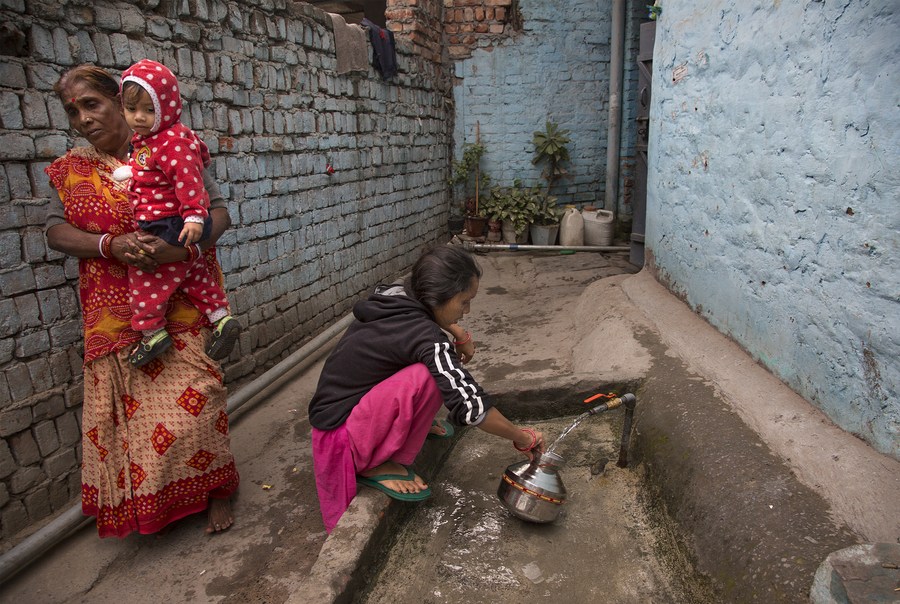
A woman gets drinking water from a tap with a container in New Delhi, India, Nov. 23, 2019. (Xinhua/Javed Dar)
MODI'S WATER LIFE MISSION
In 2019, Indian Prime Minister Narendra Modi launched an ambitious Jal Jeevan (Water Life) Mission, promising a functional tap connection to all households in rural India by 2024.
But less than 50 percent of the population has access to safely managed drinking water, according to the federal ministry of water resources, known in India as Jal Shakti.
"As of date, out of 19.32 Crore or 193.2 million rural households in the country, 9.22 Crore or 92.2 million (47.72 percent) households are reported to have tap water supply in their homes," Prahlad Singh Patel, federal junior minister of Jak Shakti, said in a statement to parliament in March this year.
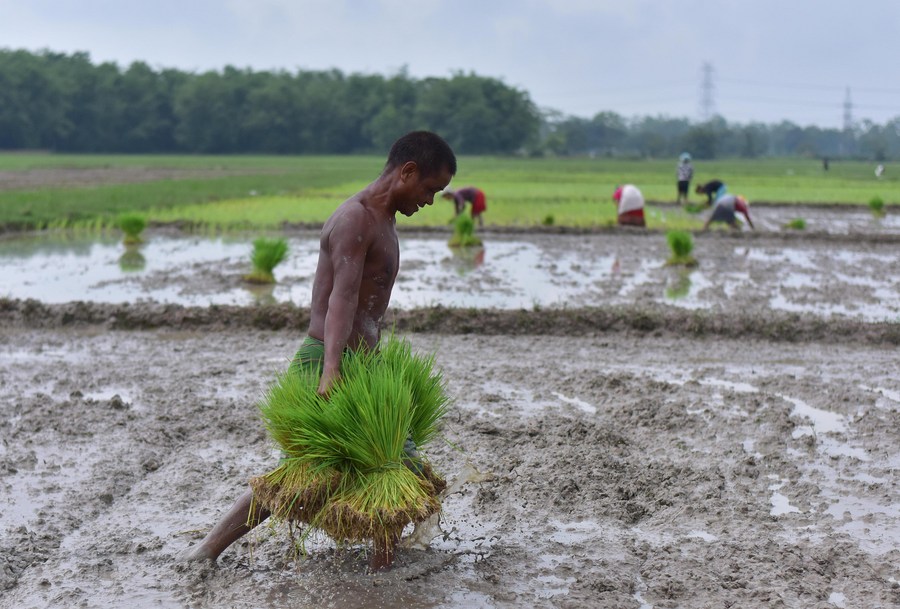
A farmer carries rice seedlings to be planted in a paddy field at a village in Nagaon district of India's northeastern state of Assam, on July 3, 2021. (Str/Xinhua)
CAUSES OF WATER STRESS
Agriculture is the main consumer of water stock in India.
India is the largest user of groundwater in the world, according to a 2021 World Bank report. It uses an estimated 230 cubic km groundwater per year -- over a quarter of the global total.
More than 60 percent of the country's irrigated agriculture and 85 percent of drinking water supplies depend on groundwater.
In rural India, 80 percent to 90 percent of drinking water needs are fulfilled by groundwater resources. Between 2007 and 2017, groundwater levels in India have declined by over 60 percent.
The World Bank report says that if current trends continue, in 20 years about 60 percent of all India's aquifers will be in a critical condition.
The use of a major percentage of fresh water for agricultural purposes to grow crops like paddy and sugarcane has led to a crisis in several states, including Punjab, Haryana and western Uttar Pradesh.
The country is not only monitoring the depletion of groundwater and pollution of surface water, but also vanishing water bodies -- ponds, lakes, tanks, wetlands -- due to encroachment.
Water pollution is another cause of water stress, leading to collateral losses in healthcare. Cities are home to 36 percent of India's population but account for 70 percent of water pollution, according to a report by the Central Pollution Control Board.
In almost all the Indian cities and towns, sewage and industry waste water end up in rivers or streams, thus polluting its water sources.
More than 50 percent of the population has no access to safe drinking water, and experts say about 200,000 people die every year for a lack of access to safe water. ■


